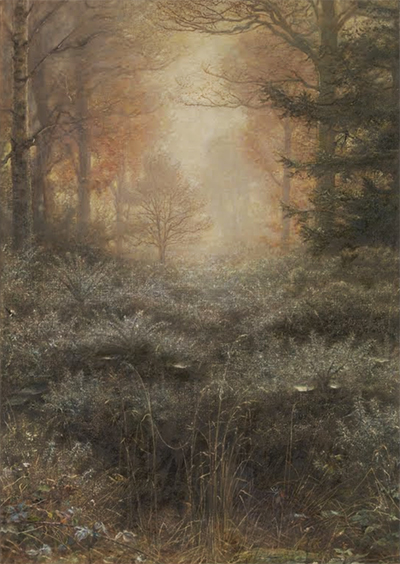Millais's greatest achievement is the Dew-Drenched Furze, which is an abstract art from an artist who is not an abstract painter. Millais painted the art piece in Perthshire in a wood, close to the Birnam Hall, in an area called the Murthy estate.
This place was an area where the Millais’s family rented out in 1881 as a recreational space. The Dew-Drenched Furze painting is as a result of Millais’s objective of capturing the morning sun as it streams through the dew droplets. This is a subject that had never been painted before, and according to his son and biographer, it was a subject that he feared would be tough to paint.
In the painting, the vaporous atmosphere is caused by the dry brush to recall the Constable's ‘snow’ effect. On the other hand, the vague form caused by the rising sun represents the Turnerian sublime.
Although the different styles in the painting bring about a Romantic landscape painting, a new perspective of nature is brought to life. In traditional painting, the framing elements lead the eye to the central part of a canvas, but in this painting, the opposite is true.
The eye wanders on the surface of the painting through the dense feel of the dew. In the foreground, there are grey-green tones that allow the glowing light to pass through to the centre of the canvas. This element creates an unknown distance deep into the images at the background. The use of paint to hide nature’s mystery is supported by Tennyson’s poem of 1850 called In Memoriam A.H.H, Stanza XI.
The New Gallery in London was the first exhibition to showcase the painting in 1890, after the Grosvenor Gallery. Originally, the painting included a c*ck pheasant as an element of emotion in the scene. This addition was added by J.G. Millais’s son, but it was removed to leave the nesting hen. This made the image appear bold as it represented nature in its greatest form, as the landscape and the light meet within the dew droplet.




